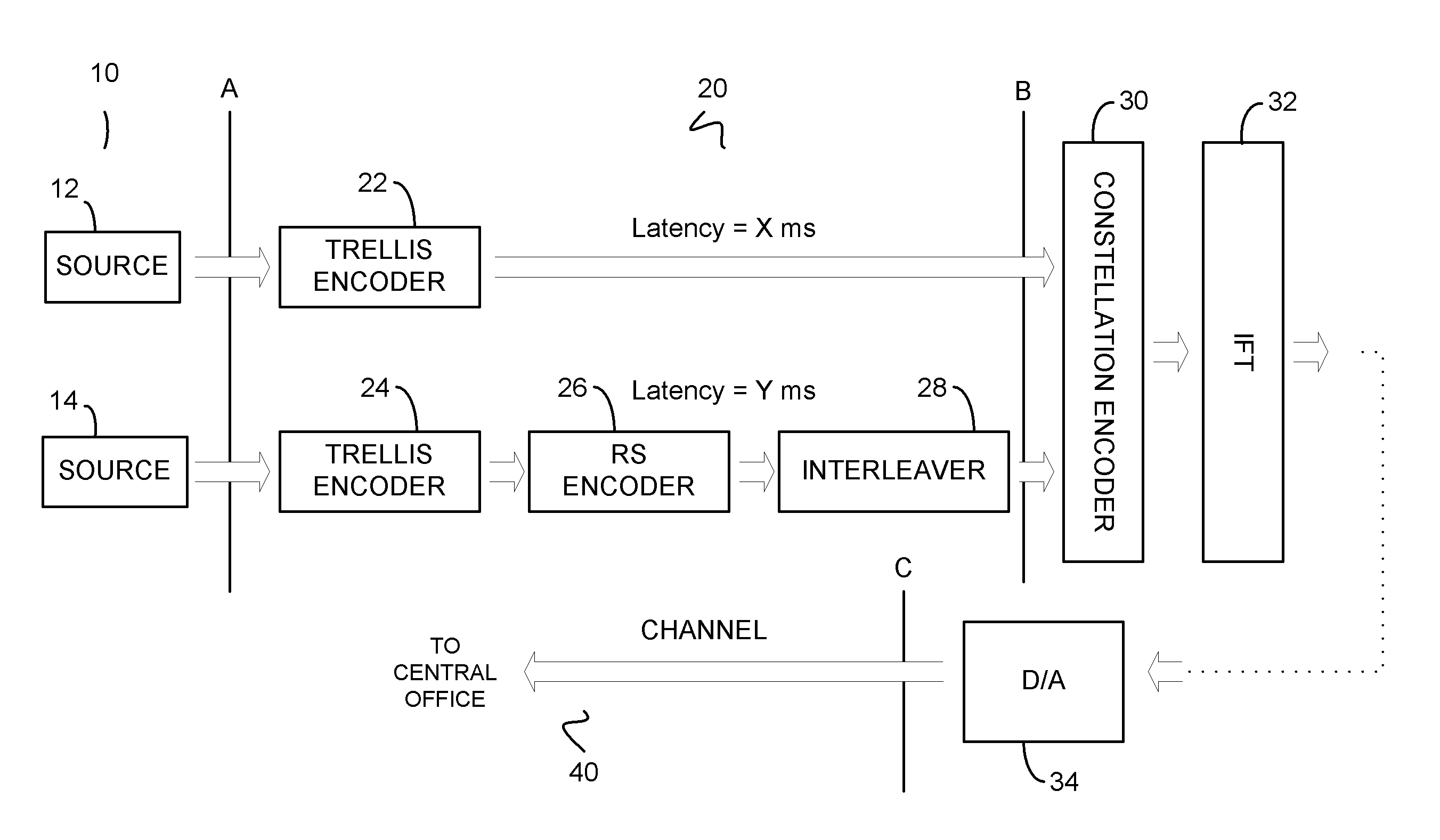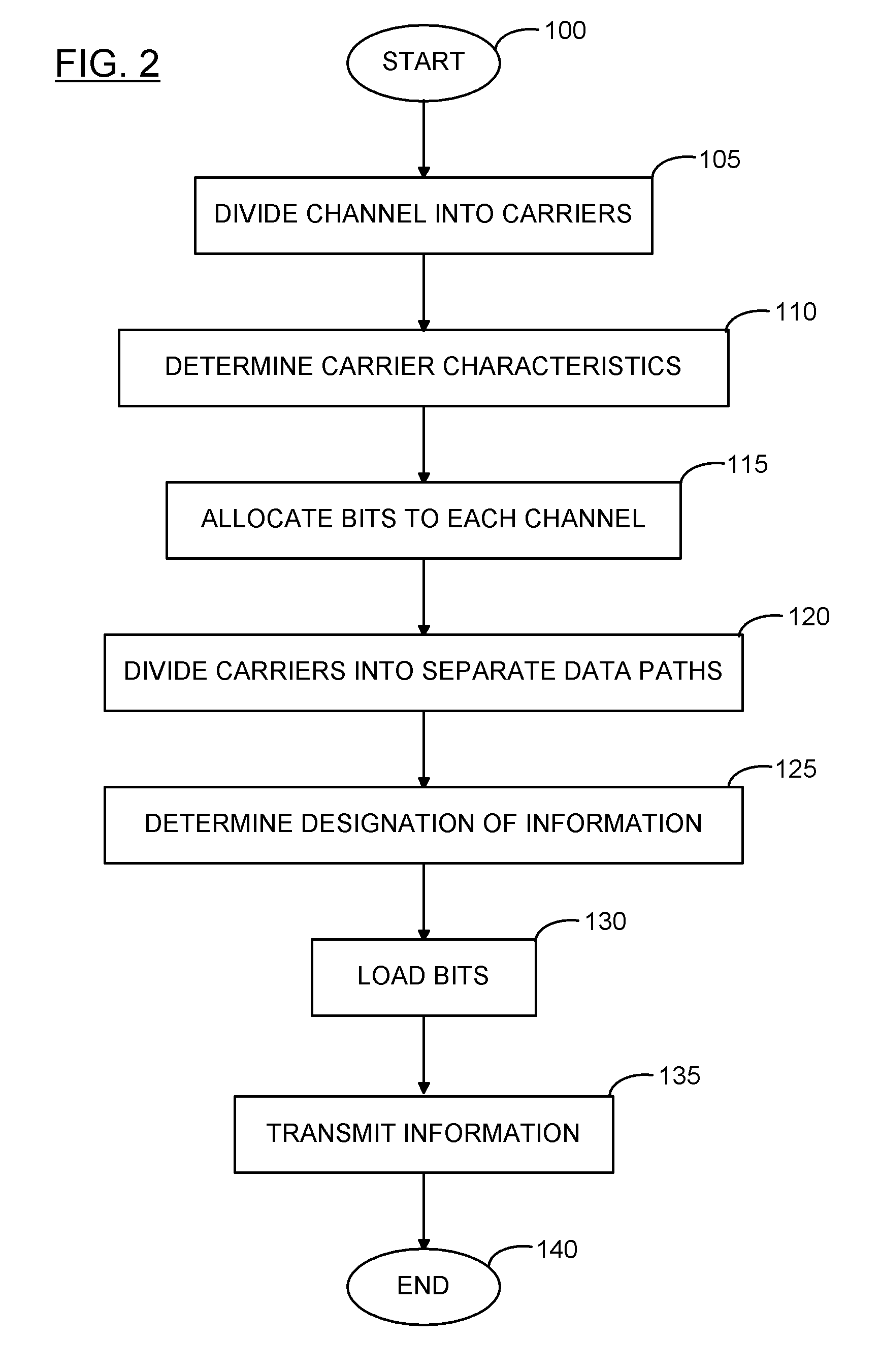Systems and Methods for Improved Bit-Loading for Discrete Multi-Tone Modulated Multiple Latency Applications
a multi-tone modulation multiple latency and discrete technology, applied in multi-frequency code systems, channel coding adaptation, duplex signal operation, etc., can solve the problems of insufficient bit-loading bandwidth, inconvenient installation, and high installation costs, so as to reduce capacity losses and improve bit-loading
- Summary
- Abstract
- Description
- Claims
- Application Information
AI Technical Summary
Benefits of technology
Problems solved by technology
Method used
Image
Examples
Embodiment Construction
[0029] The following description is intended to convey a thorough understanding of the embodiments described by providing a number of specific embodiments and details involving systems and methods improved bit-loading in a dual latency DMT-based xDSL communication system. It should be appreciated, however, that the present invention is not limited to these specific embodiments and details, which are exemplary only. It is further understood that one possessing ordinary skill in the art, in light of known systems and methods, would appreciate the use of the invention for its intended purposes and benefits in any number of alternative embodiments, depending upon specific design and other needs.
[0030] As noted above, in dual latency DMT-based xDSL systems, two data paths are established over the available sub-channels, also referred to here in as carriers. Through this scheme, segregation is possible based on the particular service type being transmitted. For example, data and even vid...
PUM
 Login to View More
Login to View More Abstract
Description
Claims
Application Information
 Login to View More
Login to View More - R&D
- Intellectual Property
- Life Sciences
- Materials
- Tech Scout
- Unparalleled Data Quality
- Higher Quality Content
- 60% Fewer Hallucinations
Browse by: Latest US Patents, China's latest patents, Technical Efficacy Thesaurus, Application Domain, Technology Topic, Popular Technical Reports.
© 2025 PatSnap. All rights reserved.Legal|Privacy policy|Modern Slavery Act Transparency Statement|Sitemap|About US| Contact US: help@patsnap.com



